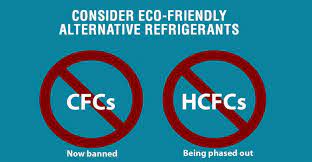CFc reduction
Courtesy : www.ehstoday.com/
A new initiative, announced late last week, will reduce the amount of chlorofluorocarbons (CFC”s) released into the atmosphere.
Four companies in India – Gujarat Fluorochemicals, Chemplast Sanmar, Mafatlal Industries and SRF Ltd. – account for approximately 15 percent of the world”s production of CFCs. Those companies announced they plan to introduce cleaner production technologies to limit the amount of “rogue” CFC emissions that escape into the atmosphere.
India is the world”s second-largest producer of CFCs, which are used in refrigerators, home and auto air conditioning units and aerosol spray cans. China produces the most CFCs.
As part of the Montreal Protocol, an environmental initiative, India agreed to a phase out of CFCs and other ozone-depleting chemicals. Under the Protocol, India and other developing nations were given timetables and financial assistance to phase-out ozone-depleting chemicals.
In addition to adopting the cleaner production technologies, the four companies said they plan to support a public awareness campaign aimed at medium- and small-sized companies that are part of the CFC supply chain, including refrigerator makers and repairers, suppliers of air conditioning units, and users of products that contain the ozone-depleting chemicals.
The initiative is supported by the Paris-based Energy and OzonAction branch of the United Nations Environment Programme (UNEP), in conjunction with India”s National Cleaner Production Centre.
“India, as the world”s second biggest manufacturer of CFCs after China, has already made great strides in reducing and phasing out these damaging substances whose production and consumption harm the stratospheric ozone layer,” said Klaus Toepfer, the executive director of UNEP. “The new initiative seeks to reduce these through companies voluntarily adopting cleaner production processes. I applaud India”s move.”
The final phase-out of ozone-depleting chemicals is scheduled in eight years. Production of CFCs by the four companies is scheduled to reach zero in 2010. At one point, during peak production in the late 1990s, the four companies produced 23,659 metric tons of CFCs annually.




